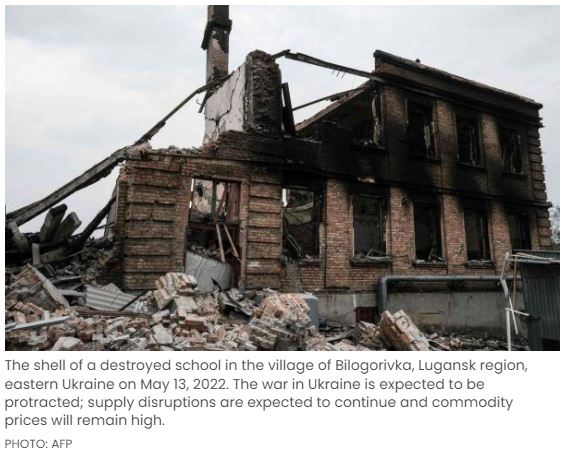Growth forecast for Asean+3 shaved down to 4.3%: Amro
THE Asean+3 Macroeconomic Research Office (Amro) has shaved down its short-term growth forecast and raised its 2022 inflation forecast for the Asean+3 region, reflecting stronger headwinds from the war in Ukraine and tighter global financial conditions.
In its July quarterly update, Amro forecast that the Asean+3 region will grow by 4.3 per cent, down from 4.7 per cent in its April forecast.
This reflects mainly downgrades in growth forecasts for the Plus-3 economies (4.1 per cent in July versus 4.6 per cent in April). The downward revisions were underpinned by the sharp step down in growth during the first half of the year, notably in China and Hong Kong.
This in turn weighed on growth in Japan and South Korea, Amro said in its report.
The 2022 growth forecast for Asean remains unchanged from April’s projections. In 2023, growth is expected to strengthen to 4.9 per cent (up from April’s projection of 4.6 per cent).
On the inflation front, Amro has raised its 2022 inflation forecast for the region to 5.2 per cent, up 1.7 percentage points from April.
Elevated prices for fertiliser and feedstock will continue to push up food prices through this year and into the next, said Amro in its report. For economies such as Singapore where the growth momentum is strengthening, the narrowing output gap and tight labour market is adding to inflation pressure, it added.
Overall, inflation for Asean+3 is projected to moderate to 2.8 per cent in 2023.
“Just as the Asean+3 region is starting to emerge from the Covid-19 health crisis, the protracted war in Ukraine and persistent inflation in the United States have ushered in a new set of challenges for policymakers,” said Amro chief economist, Khor Hoe Ee.
Looking ahead, risks to the growth outlook for the region have increased since the last assessment in April, said Amro.
These include elevated commodity prices and supply chains that continue to experience disruptions. At the same time, a sharper-than-expected slowdown in China is among the list of downgrade risks confronting the region.
“While the authorities have successfully contained the recent surge in infections, the repeated lockdowns have slowed production and dampened domestic demand,” said Amro in its report.
“A sharper deceleration in China’s consumption and real estate activities would be a significant drag on the economy, with spillovers that would further undermine the region’s growth outlook.”
Meanwhile, monetary policy tightening in the US has become more aggressive now than in April. This has led to a spike in risk aversion and capital outflows from the region, pushing up borrowing costs.
The risk of excessive capital outflows, weaker exchange rates, and higher inflation is putting pressure on the region’s central banks to tighten monetary policy.
“Navigating this formidable environment, Asean+3 policymakers are now facing difficult policy trade-offs as they balance the need to sustain the growth momentum while containing the inflationary pressure,” noted Dr Khor.
Already, several Asean+3 economies such as South Korea, Malaysia, the Philippines and Singapore have already started to normalise their accommodative monetary policy stance accordingly.
Source: https://www.businesstimes.com.sg/asean-business/growth-forecast-for-asean3-shaved-down-to-43-amro


 English
English




